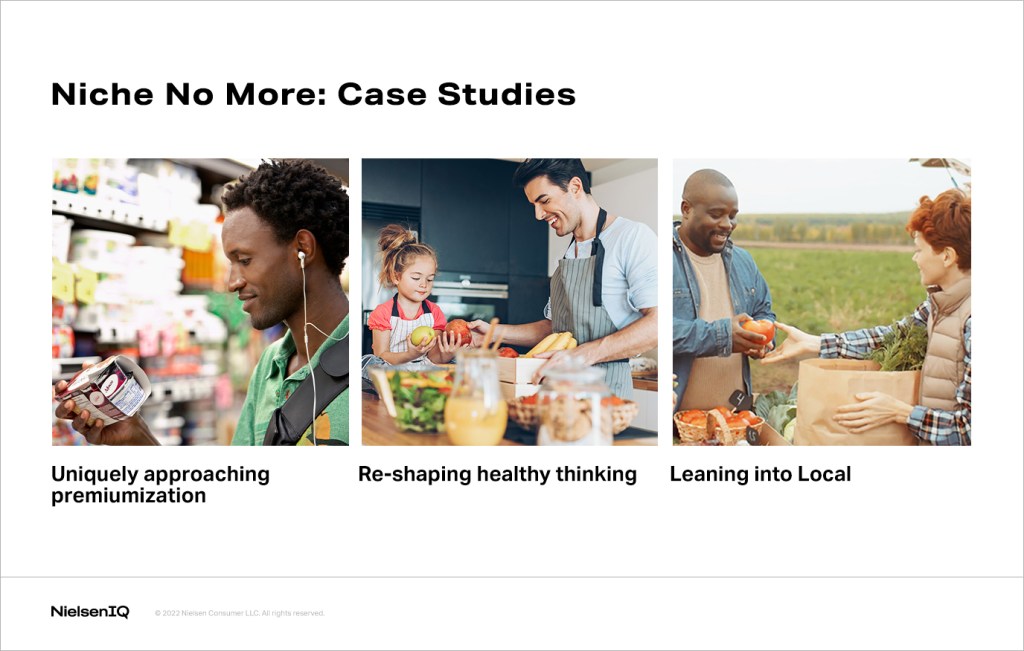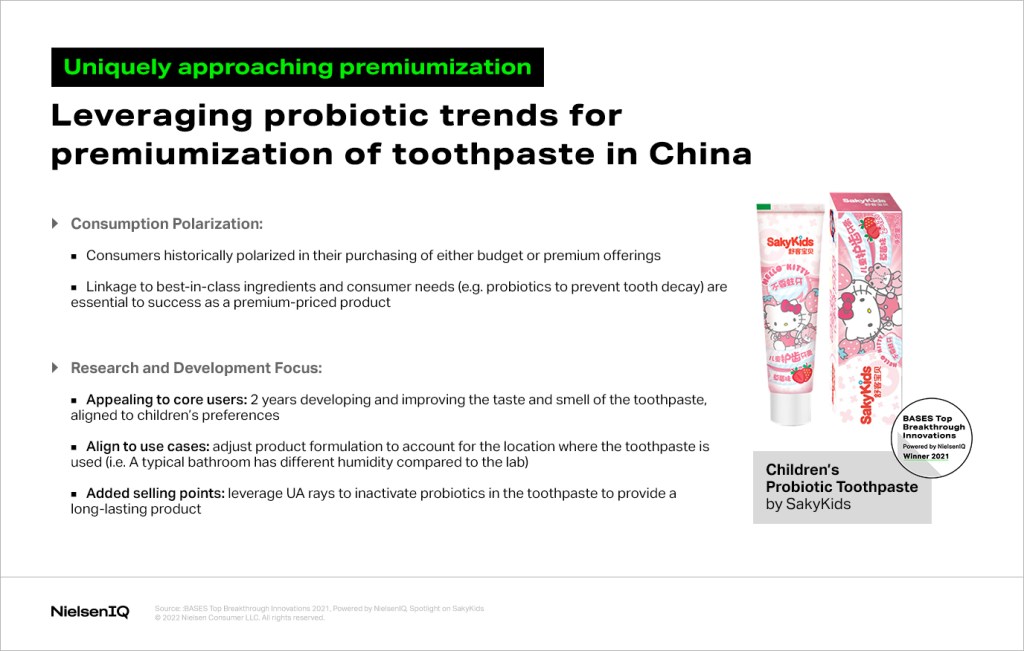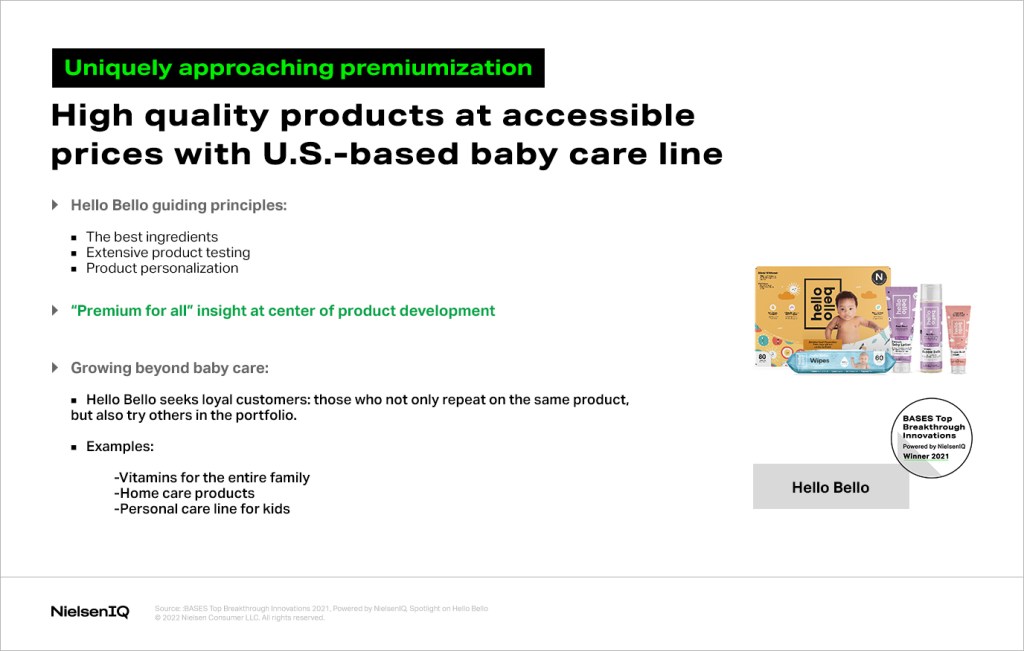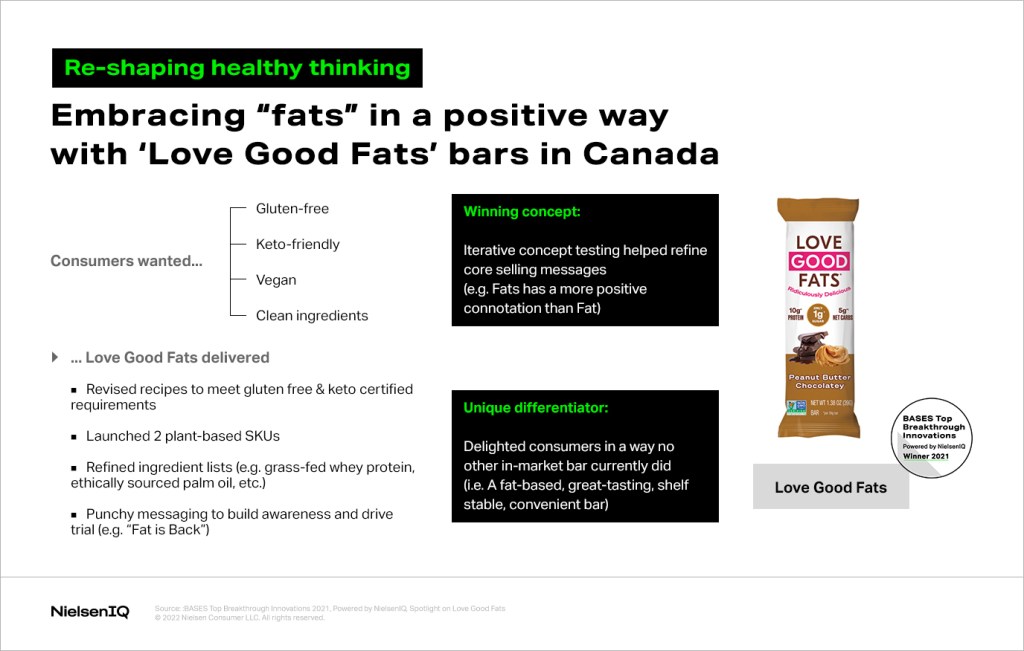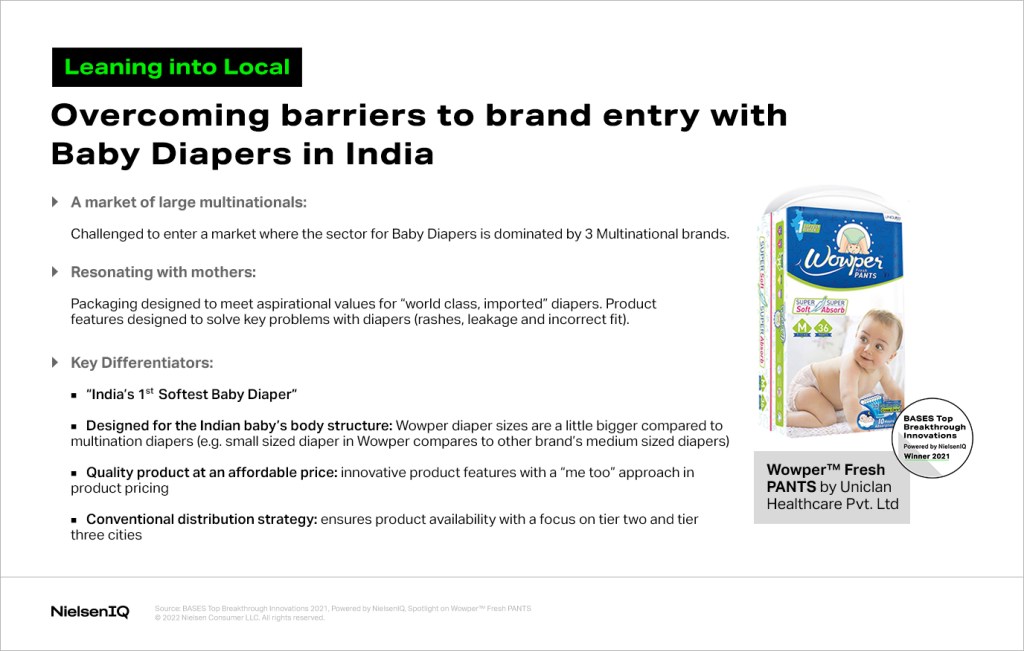Consumers show a strong appetite for new products
While it’s essential to understand opportunities with consumer brand preferences and which brands are setting the pace for growth, it’s equally important to align efforts with the trendsetting mentalities of your consumers. Knowing your consumers’ openness to trying something new will guide how much nurturing is needed to entice brand trial.
Findings from NielsenIQ’s global study, the 2022 Brand Balancing Act, confirm that a majority of consumers today are actively seeking new and trendy products in the FMCG space.
- 29% are trend leaders, who enjoy being the first to try new things. They love to “keep ahead of the curve” and tell others about new products.
- 40% are innovation-seekers, who try to keep up with what’s new and often are on the lookout for new products.
- 25% are mainstream followers who sometimes try new things, but don’t go out of their way to seek them.
- Only 6% are routine-seekers that seldom try new things. They know what they want and avoid the risks of buying something that may not work out.
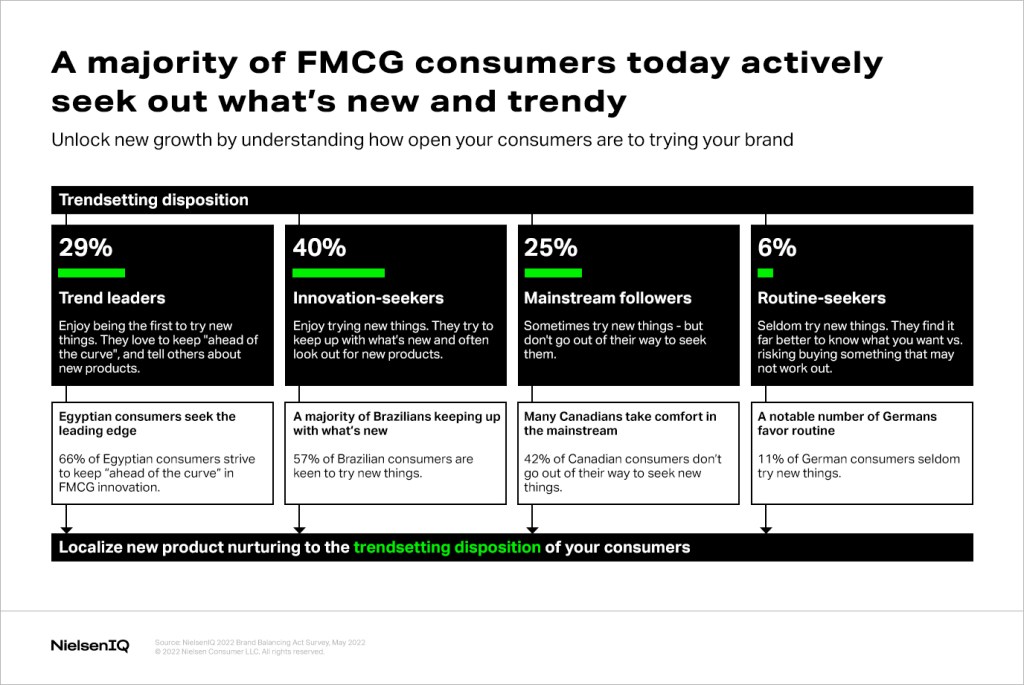
Knowing that only a fraction of global shoppers are averse to new products right now, it’s important to think conceptually about the cycle to which trends can initially appeal to consumers. Intrigue is likely to start with trend leaders, and some brands may bridge interest to a share of innovation-seekers as well. But for many, it is difficult to scale true mainstream interest. The few brands who can sustain momentum must keep a sense of newness for the most trend-savvy while attempting to earn the trust of mainstream followers and routine-seekers.
Niche no more: Small brand innovation inspiration
In many cases, some of the newest and most specific product concepts have started with small brands owning niche opportunities. NielsenIQ identified several recent small brands that have successfully scaled from niche markets to mainstream interest. Learning from past examples around the globe can help today’s smaller brands, and interested larger brands, better identify opportunities that hold the potential to scale beyond their niche.
All of the following small brand examples have found success from scaling niche values. Each has earned recognition as a BASES Top Breakthrough Innovations award winner in 2021.
Examples of smaller brands who have innovated successfully
Scroll through these case studies of brands who have succeeded in scaling niche opportunities
The obvious takeaways from the preceding case studies show us that when honing in on opportunities, there are extremely specific shopper needs that have often been fulfilled uniquely by smaller brands. A key growth driver was their ability to cater to one of the trend-enabling strengths:
- Uniquely approaching premiumization: Product quality and claim alignment were particularly important to the most trend-seeking consumers. Our exemplary small brands resonated with a broad spectrum of consumers due to their “value added” and premium-for-all approach.
- Reshaping healthy thinking: Shoppers are hyper-aware of the product claims and benefits offered by the brands they buy. With consumers worldwide prioritizing health and wellness, brands have the opportunity to introduce innovative ways for consumers to meet their unique wellness needs. Our product examples leveraged bold messaging to educate consumers on a unique offering that filled a void in the space.
- Leaning into local: 56% of respondents said they prefer to buy locally-made products from small businesses in their area. This was especially important to trend leaders (67%) and innovation seekers (57%). Our case study example used this strength to recruit new shoppers into their category and identify where they have advantages over large multinationals.
The bottom line of brand innovation
Trend-seekers are the new majority, with almost 7 in 10 global respondents saying they actively seek out what’s new and trendy. At a time when inflation is forcing customers to make tough decisions in the store, it pays to balance cautious intentions with growing desires for shaking up purchase routines. To succeed in a difficult client climate, unleash brand innovation alongside current demand for trying new things.
Stay ahead by staying in the loop
Don’t miss the latest NIQ intelligence—get The IQ Brief in your inbox.
By clicking on sign up, you agree to our privacy statement and terms of use.
